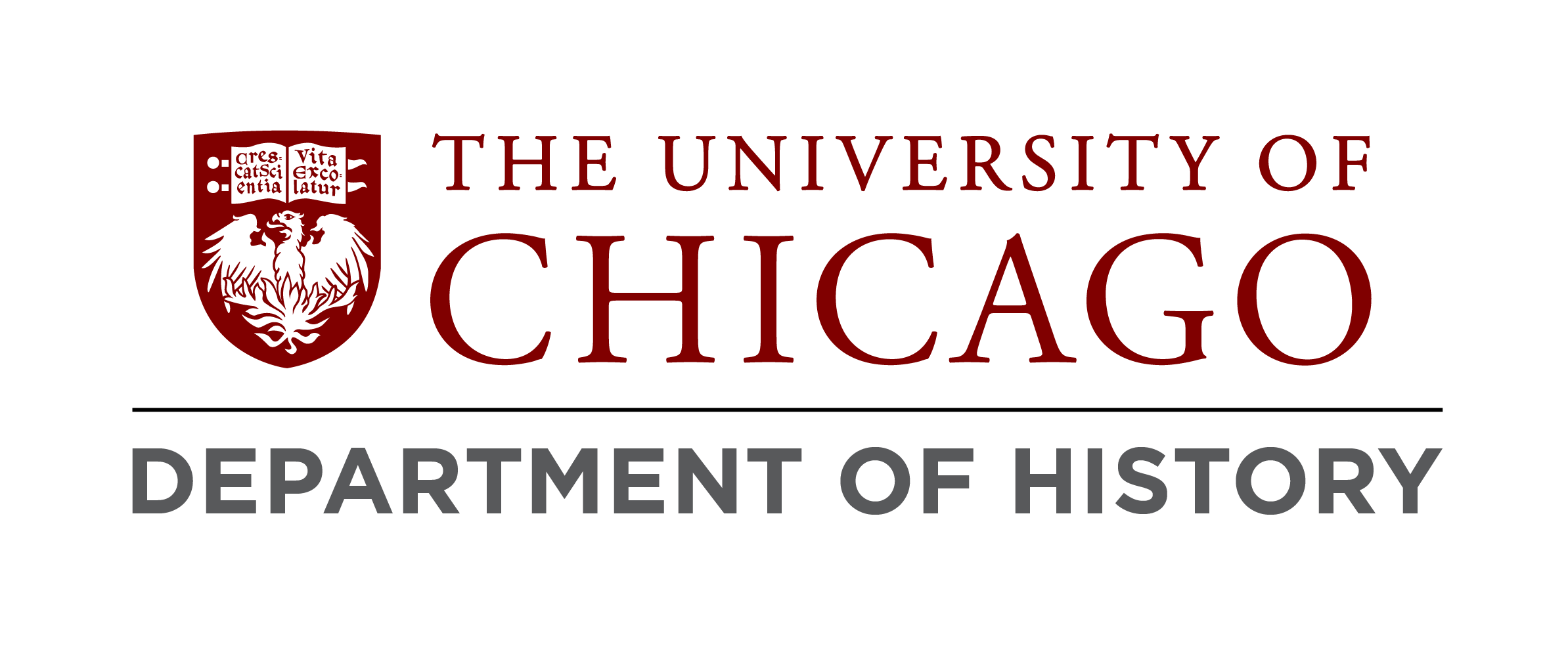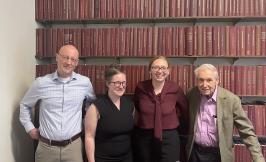Spring 2024 Graduate Alum Spotlight, Emma Kitchen
To begin, I’d love to learn more about your work. I’m fascinated by your dissertation title, “The Aurochs Through Time: A History of Integrating Timescales and Disciplines in the Study of the Ancestral Cow.” Most of what I have read about aurochs (an extinct bovine species) pertains to de-extinction efforts, which tend to contain just enough history to confirm that they were important for domestication and went extinct in the seventeenth century. So, I have two main questions.
-
Can you explain the importance of aurochs for historical research in addition to the environmental reasons?
It’s a strange story, isn’t it? The aurochs was an excellent way to look at how different disciplines in science have converged or diverged, and why they attempted to reconcile their forms of study with one another when they did. The aurochs is one of these fascinating “things” that spans different places, regimes, and, for my interest, scientific understandings. It’s dizzying in its multiplicity, but what fascinated me most was that while it was a historical subject of scrutiny it was still in motion and in a very dramatic way. It was deemed extinct, sure, but, as you note, it was being reconstituted through its living descendants. Historians often describe their subjects in motion, taking on new meanings with each new set of eyes that looks at them. My interest was in tracking something that was biologically evolving, materially and behaviorally changing through its human-ecological encounters, and was also framed within new scientific and cultural paradigms. Basically, historical study of the aurochs shows how change over time was considered by different groups (paleontologists, breeders, geneticists, archeologists, historians, and yes, fascists), and how the friction points in those differences were overcome or are still being overcome, as the aurochs is currently targeted for de-extinction. To give the aurochs its due, it also happens to be the progenitor of one of the most consequential domesticates we have: cattle. That has given it world historical and biological importance -
How does integrating disciplines and timescales improve our understanding, not only of aurochs, but also human and ecological history?
Shifting focus between scales is a method in which historians, especially of the environment, excel. What interested me in this story was how focusing on one discipline (paleontology, for example) or one timescale (a single cow’s mating season, for example) might miss important higher order lessons that can only emerge when tracing how these differing specialists historically brought their work into conversation. I took inspiration largely from biologists. There are, crudely put, cycles in the history of evolutionary biology between emphasis on small-scale/short-time study systems and larger-scale ones, which periodically give way to moments in which biologists seek reconciliation of the disparate scales they study. What might genetics and paleontology have to say to one another, for example, and how? This systems-thinking gives way to institutional changes, as disciplines find ways to talk to one another. This happened in evolutionary biology in the early 20th century, again in the 1980s, and is having a resurgence now.
At its most fundamental level, that kind of history reminds us of the ways in which we have carved up our silos of study, often by discrete timescales. That’s the case in both history and biology. It’s always fascinated me that historians and biologists are in some ways working against that same theoretical and institutional constraint: how we carve up time.
After you graduated from the Department of History at UChicago in winter of 2023, became a UChicago Teaching Fellow. Your primarily teaching is in the History, Philosophy, and Social Studies of Science and Medicine core courses.
-
How did your graduate training prepare you for the Fellowship?
I was really fortunate to witness the teaching styles of very generous mentors while a graduate student. I was also given the opportunity to teach lectures, and to design and teach my own course. That has now allowed me to experiment more deliberately with my teaching as a Fellow, because many successful styles of classroom learning were modeled for me, and I was able to try my hand at some of them before taking on this role. The Core certainly has a relationship to disciplinary “canon”, which my graduate studies prepared me well for, but in my experience, it also encourages experimentation in teaching and thinking.
-
Which of your courses stand out to you?
I’ve had the opportunity now to design and teach courses in HIPS on two topics that are near and dear to my interests: evolution and horror. In the latest, Science in Horror, I organized everything around a single prompt (what relation does science have to fear?) and joined students on the mission of exploring that question. The result was a collaborative exploration of art, history, emotion, and “schlocky” practical effects in which students engaged each other on questions of value, scientific presentation, and present crises. Without a single prescribed approach to our question, we found connections between personal movie preference, disillusionment, and students’ own scientific work. From my experience, helping students acquire tools to navigate styles of communication and thought is what the Core stimulates. It’s also a credit to the HIPS program, which allows its instructors freedom to explore different teaching topics and modes, and a credit to the highly motivated, engaging, and ever-incisive students in the Core who make a course what it is.
I understand you also have some experience with the natural history museums. What kind of experience do you have and how has that shaped your research, teaching, or perspective on history?
Oh yes! That’s a large reason why I wanted to come to Chicago for my graduate training. I’ve found my way into the Field Museum in many capacities. I started as an intern in the mammal collections, working with the specimens, databases, and records, and continued with that work as a volunteer while I was a graduate student. I’ve given public presentations (and dissections), and have also worked with the exhibits department, generating a research project that explored how the working relationship between museum scientists and exhibits developers informed scientific research priorities. And, since we’re wearing historian hats here, I was able to use the Field’s extensive archives for some historical research on the development of their zoological and anthropological dioramas and am currently wrapping up a history collaboration with a paleontologist on 19th century “living fossils.”
Natural history museums are such a special space: they are at the center of cutting-edge collaborative research, and they are structured in ways that in some cases haven’t changed in over a century. Sound familiar? Because of their many roles, they provide historians of science and culture with a living relic to engage. They memorialize not just the specimens or theories, but also the modes of doing science. That’s been a central conceit for my Evolution Beyond Darwin course, which explores how contemporary evolutionary science is affected by its history and public afterlives, including those on display.
How does both your academic work and involvement with natural history museums translate to public history?
I wonder at that often, especially as I apply for what might be next. So far, my work has afforded me a perspective on history that sees the intensive accomplishments of researchers in a university setting as just one moment in a developing process.
Natural history museums certainly allow you to understand audiences much better, too. They allow you to go beyond an insular story and to get a sense of the bigger whole. I’ve found a certain reciprocity to the framing of problems in evolutionary bio through my history research and teaching. Public discourse about scientific concepts, sometimes, forms a social incubator, keeping certain frameworks percolating after they’ve been jettisoned by scientists. But science moves in frameworks. New ways of looking at old problems generates movement, and those public spaces can recirculate ways of looking that then feel new again.
 THE UNIVERSITY OF CHICAGO
THE UNIVERSITY OF CHICAGO







